Discover the Best of Osaka Castle in Just One Morning
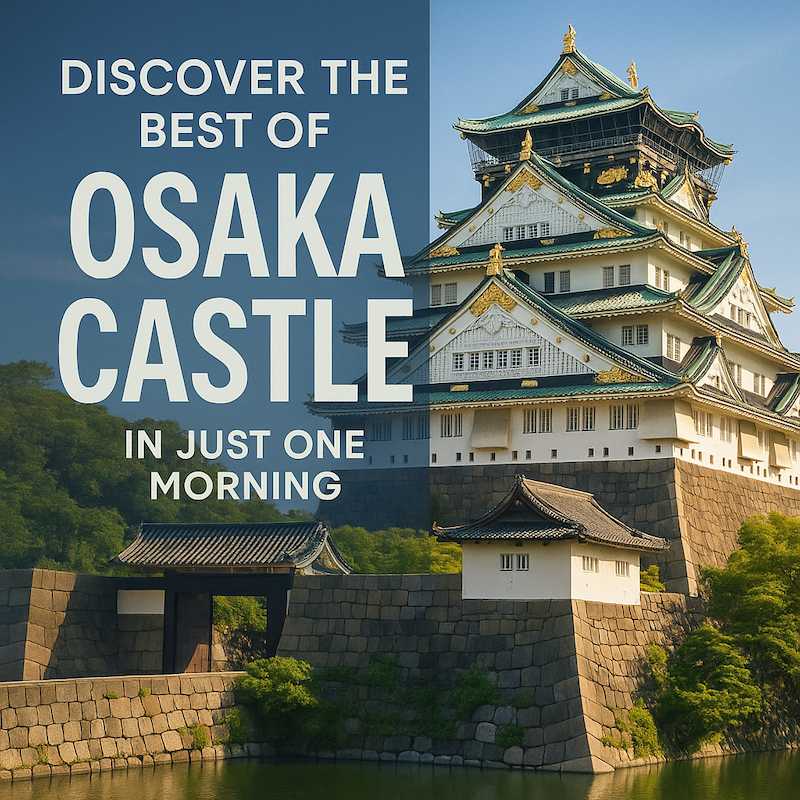
Explore the soul of Osaka through this thoughtfully curated walking tour of the iconic Osaka Castle grounds. Perfect for first-time visitors and curious history enthusiasts, this guide features seven of the most visually captivating, culturally significant, and easily walkable sites across the castle complex.
From imposing stone gates and historic turrets to serene gardens and legendary shrines, each stop reveals a different facet of Japan’s samurai legacy—all in the span of a single morning. Get ready for a journey where centuries of power, ambition, and beauty come to life in one unforgettable loop.
Start your adventure at Tanimachi 4-chome Station and finish at Osaka Business Park Station for the smoothest and most efficient route.
Otemon Gate & Tamon Yagura
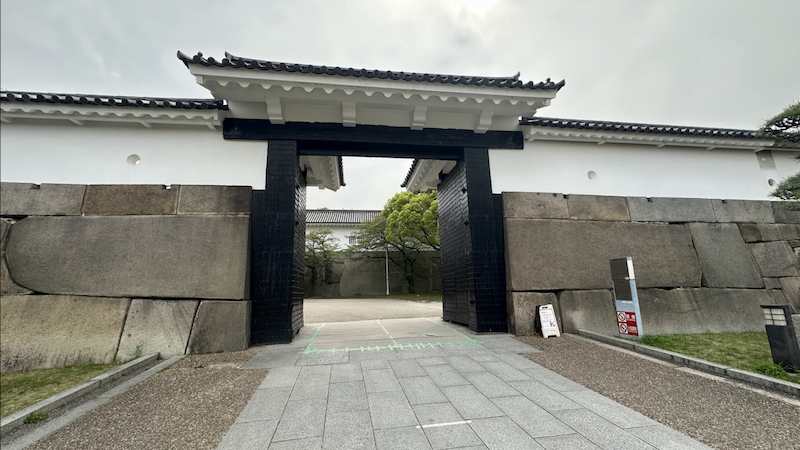
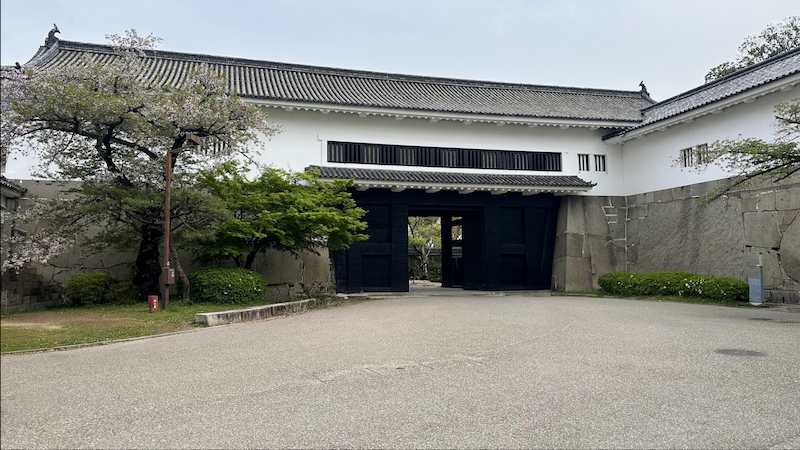
⭐ Recommendation Rating
- Historical Significance: ☆☆☆
- Visual Appeal: ☆☆☆
- Experiential Value: ☆☆
The Otemon Gate, together with the Tamon Yagura turret, forms the grand entrance to Osaka Castle and immediately sets the tone for the historical journey that awaits inside. The current reconstructed structures date back to the early Edo period, having been reconstructed by the Tokugawa shogunate after the fall of the Toyotomi clan in 1615. This area exemplifies the castle’s defensive design, with thick stone walls and elevated turrets strategically overlooking the moat.
Tamon Yagura was used both for defense and storage, and it remains one of the few surviving Edo-period turrets at Osaka Castle. The surrounding masugata-style layout (square enclosure) forced intruders to slow down, making it easier to defend the entrance.
| Year Built | Rebuilt in the early Edo period (circa 1620s) |
|---|---|
| Builder | Tokugawa shogunate engineers |
| Structure/Features | Masugata-style gate with Tamon Yagura turret and stone walls |
| Renovation/Restoration | Multiple restorations; walls and turret maintained since Edo period |
| Current Status | Tamon Yagura remains original; Otemon partially reconstructed |
| Destruction/Damage | Original Toyotomi structures destroyed in the 1615 Siege of Osaka |
| Cultural Property Designation | Important Cultural Property (Tamon Yagura) |
| Remarks | Serves as the symbolic entrance to Osaka Castle |
🗺 Address:
1-1 Osakajo, Chuo Ward, Osaka, 540-0002
🚶 Access:
Approx. 5-minute walk from Tanimachi 4-chome Station (Exit A-1) on the Osaka Metro
⏳ Recommended Visit Duration:
- Quick sightseeing: ~10 minutes
- In-depth exploration: ~20 minutes
📍 Key Highlights
- Tamon Yagura Turret: One of Osaka Castle’s few remaining original turrets from the Edo period.
- Masugata Courtyard: A square-shaped defensive zone designed to trap invaders between walls.
- Moat Views: Great photo spot with wide-angle views of the inner and outer moats.
- Stone Walls: Massive granite blocks fitted together with no mortar, showcasing engineering skill.
- Symbolic Entrance: Passing through this gate marks the official entry into the world of samurai and shogun rule.
📌 Trivia
- Historical Significance: This gate area was once the front line of defense against attackers during the Siege of Osaka.
- Connection to Famous Figures: Though built by Tokugawa forces, this entrance once led to the inner grounds of Toyotomi Hideyoshi’s grand castle.
Nishinomaru Garden
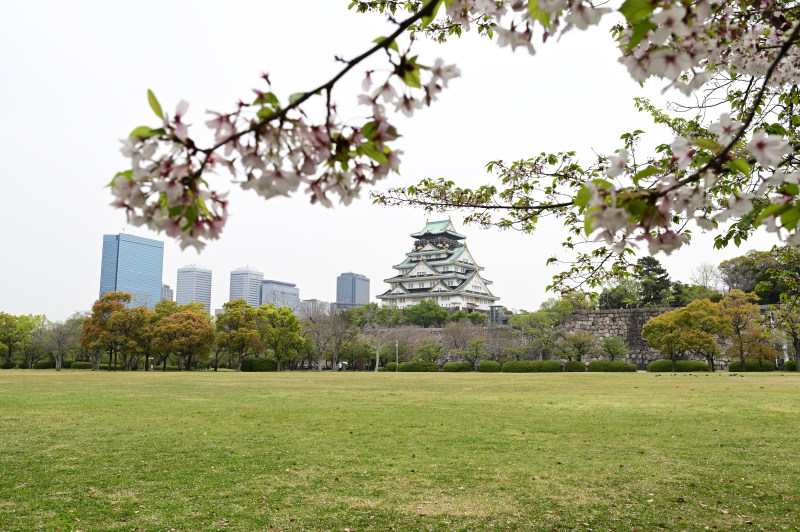
⭐ Recommendation Rating
- Historical Significance: ☆☆☆
- Visual Appeal: ☆☆
- Experiential Value: ☆☆☆
Nishinomaru Garden is one of the most scenic and historically significant areas of Osaka Castle. This space was historically the site of the palace residence of Nene (Kita-no-Mandokoro), the wife of Toyotomi Hideyoshi, this space holds deep cultural and emotional meaning. During the Edo period, it was also an administrative zone under Tokugawa control.
The garden as it is seen today was largely developed in 1969, featuring a spacious 6.5-hectare lawn framed by cherry trees—most famously, around 300 Somei Yoshino trees that bloom spectacularly in spring. It offers a tranquil contrast to the bustling main tower area, making it an ideal place for rest, photography, and peaceful reflection.
Several historic structures remain or have been relocated to the area, including the Inui Yagura and Sengan Yagura turrets (designated Important Cultural Properties), and the Osaka Guest House (formerly the Kii-no-Miya Residence), built to commemorate Emperor Shōwa’s wedding.
Please note: admission to Nishinomaru Garden requires a separate entrance fee.
📌 Admission Info
- Fee: ¥200 (as of 2025)
- Hours: March to October 9:00 AM – 5:00 PM (entry closes at 4:30 PM)
November to February 9:00 AM – 4:30 PM (entry closes at 4:00 PM) - Closed on Mondays (or the following day if Monday is a national holiday)
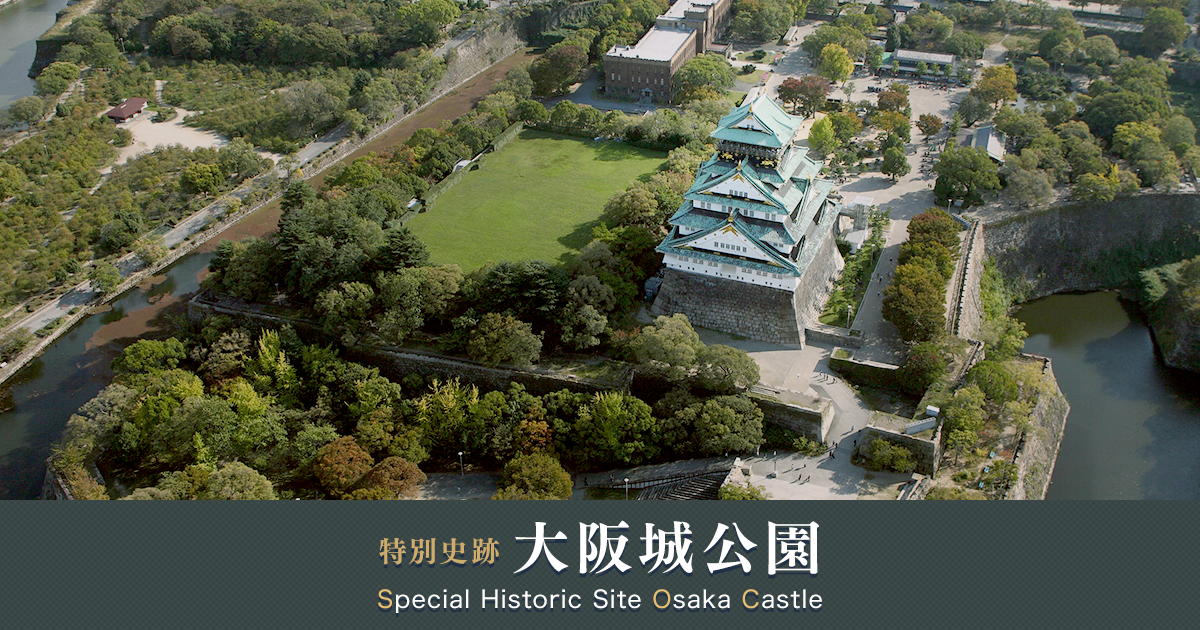
| Year Built | Developed as a garden in 1969 (Shōwa 44); historically established in the early Edo period |
|---|---|
| Builder | Originally under Toyotomi administration; later developed by Tokugawa shogunate |
| Structure/Features | Large lawn area, historical turrets, seasonal cherry blossoms, Osaka Guest House |
| Renovation/Restoration | Garden landscaping completed in 1969; Osaka Guest House restored from Kii-no-Miya Residence |
| Current Status | Open to the public as a paid-entry park; used for hanami, strolls, and cultural events |
| Destruction/Damage | Original palace structures lost during the Siege of Osaka (1615) |
| Cultural Property Designation | Inui Yagura and Sengan Yagura designated Important Cultural Properties |
| Remarks | Excellent seasonal photography location with views of the main keep |
🗺 Address:
2 Osakajo, Chuo Ward, Osaka, 540-0002
🚶 Access:
Approx. 4-minute walk from Otemon Gate & Tamon Yagura
⏳ Recommended Visit Duration:
- Quick sightseeing: ~20 minutes
- Full stroll and photography: ~40 minutes
📍 Key Highlights
- Cherry Blossoms: Around 300 Somei Yoshino trees bloom in spring, making it one of Osaka’s top hanami spots.
- Historic Turrets: Inui Yagura and Sengan Yagura add architectural depth and historical resonance.
- Osaka Guest House: A modern Showa-era structure built for imperial use, blending with the castle’s older features.
- Wide Lawn Area: Ideal for resting, picnics, and scenic views of the castle tower.
- Serene Atmosphere: Less crowded than the inner keep, offering a peaceful counterpoint to the main attractions.
📌 Trivia
- Historical Residence: This area was once the site of Nene’s palace, known as Nishinomaru Goten.
- Political Significance: During Toyotomi Hideyori’s rule, Tokugawa Ieyasu used this area to conduct political affairs, marking it as a key location in the transition from Toyotomi to Tokugawa power.
Toyokuni Shrine
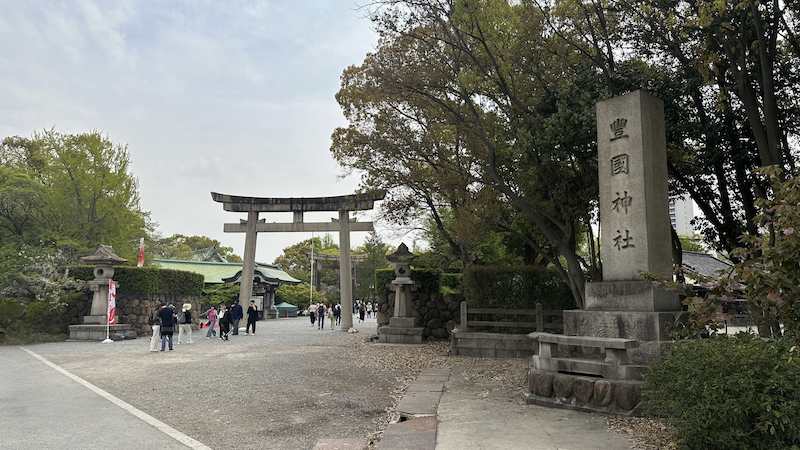
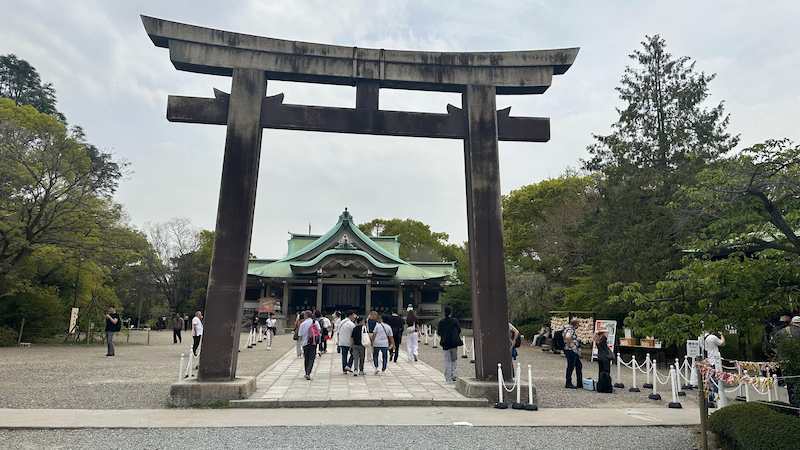
⭐ Recommendation Rating
- Historical Significance: ☆☆
- Visual Appeal: ☆☆
- Experiential Value: ☆☆☆
Toyokuni Shrine is dedicated to Toyotomi Hideyoshi, one of Japan’s most influential historical figures and the unifier of the country during the late 16th century. The shrine was originally constructed in 1599 by his followers after his death but was destroyed by the Tokugawa shogunate. The current version was rebuilt in 1880 (Meiji 13), after the Meiji government reinstated Hideyoshi’s status as a revered national hero.
The shrine features a striking bronze torii gate, wide stone steps, and a serene worship hall. Visitors can observe traditional practices such as ringing the bell, offering coins, and writing wishes on wooden ema plaques. In addition, the shrine offers goshuin (calligraphic shrine stamps) and omamori (amulets) for purchase—making it a meaningful cultural stop as well as a spiritual one.
| Year Built | Original: 1599; Current structure: 1880 (Meiji 13) |
|---|---|
| Builder | Rebuilt under the Meiji government |
| Structure/Features | Bronze torii gate, stone approach, honden (main hall) |
| Renovation/Restoration | Bronze torii replaced previous wooden structure; periodic repairs to shrine buildings |
| Current Status | Active Shinto shrine with public access and seasonal events |
| Destruction/Damage | Original shrine destroyed during the Edo period by Tokugawa decree |
| Cultural Property Designation | None officially designated |
| Remarks | Popular site for prayers of success and ambition, reflecting Hideyoshi’s legacy |
🗺 Address:
2-1 Osakajo, Chuo Ward, Osaka, 540-0002
🚶 Access:
Approx. 6-minute walk from Nishinomaru Garden
⏳ Recommended Visit Duration:
- Quick visit: ~10 minutes
- With cultural experience (ema, prayer): ~20 minutes
📍 Key Highlights
- Hideyoshi’s Shrine: Dedicated to the famous warlord and unifier of Japan.
- Bronze Torii Gate: A symbol of strength and modern reverence, dating to the Meiji era.
- Peaceful Grounds: A spiritual retreat within the bustling Osaka Castle complex.
- Cultural Experience: Participate in Japanese shrine rituals—perfect for first-time visitors.
- Photogenic Angles: Great views of Osaka Castle rising behind the shrine structures.
📌 Trivia
- Historical Irony: The man honored by this shrine was once declared an enemy by the Tokugawa shogunate, who demolished the original structure.
- National Revival: Hideyoshi was posthumously celebrated during the Meiji Restoration as a symbol of national unity and ambition.
🔗 Official Website: https://www.osakacastlepark.jp/articles/detail.html?lang=en&id=213
Sakuramon Gate
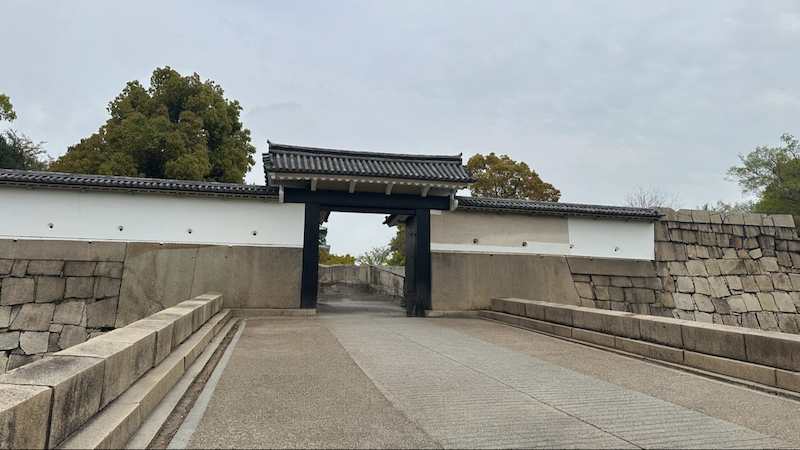
⭐ Recommendation Rating
- Historical Significance: ☆☆☆
- Visual Appeal: ☆☆
- Experiential Value: ☆☆
Sakuramon Gate is the grand southern entrance to Osaka Castle’s inner bailey (honmaru) and one of the most photogenic and symbolically significant structures in the complex. Originally built during the Toyotomi period and later rebuilt by the Tokugawa shogunate after the 1615 Siege of Osaka, the gate exemplifies strategic feudal architecture.
Its defining feature is the massive stone masugata (square courtyard) structure, built with colossal granite blocks—some weighing over 100 tons. Many of these stones are engraved with the crests of feudal lords who contributed to the Tokugawa castle reconstruction, providing insight into the political alliances of the time.
Today, Sakuramon remains the main entrance for most visitors to Osaka Castle’s central tower, creating a dramatic transition from the outer park into the core of samurai-era Japan.
| Year Built | Reconstructed by Tokugawa shogunate in the 1620s |
|---|---|
| Builder | Various daimyo under Tokugawa Ieyasu |
| Structure/Features | Masugata-style gate complex with massive stone walls |
| Renovation/Restoration | Stones maintained; modern signage and accessibility upgrades added |
| Current Status | Fully intact and open to the public as main castle entrance |
| Destruction/Damage | Original Toyotomi-period gate destroyed in 1615; rebuilt by Tokugawa |
| Cultural Property Designation | Not individually designated, but part of Osaka Castle Historic Site |
| Remarks | Named “Sakura-mon” after cherry trees planted nearby |
🗺 Address:
1 Osakajo, Chuo Ward, Osaka, 540-0002
🚶 Access:
Approx. 3-minute walk from Toyokuni Shrine
⏳ Recommended Visit Duration:
- Quick visit: ~10 minutes
- With photo stops and stone inspection: ~20 minutes
📍 Key Highlights
- Masugata Layout: A defensive square structure designed to slow enemy intrusions and expose them to attack from above.
- Engraved Stones: Look for clan crests and inscriptions on giant boulders—each tells a political story.
- Photo Spot: One of the most dramatic castle views, especially when looking through the gate toward the main tower.
- Scale & Engineering: Stone blocks up to 5 meters wide—engineering marvels of the 17th century.
- Seasonal Cherry Blossoms: True to its name, cherry trees around the gate bloom beautifully in spring.
📌 Trivia
- One Stone Weighs Over 108 Tons: Known as the “Octopus Stone,” it’s one of the largest castle stones in Japan and can be found just inside the Sakuramon Masugata.
- Political Symbolism: The engraved crests show how Tokugawa united former enemies under a new regime through construction projects.
Toyotomi Hideyoshi’s Ishigaki-kan (Stone Wall Exhibition Hall at Osaka Castle)
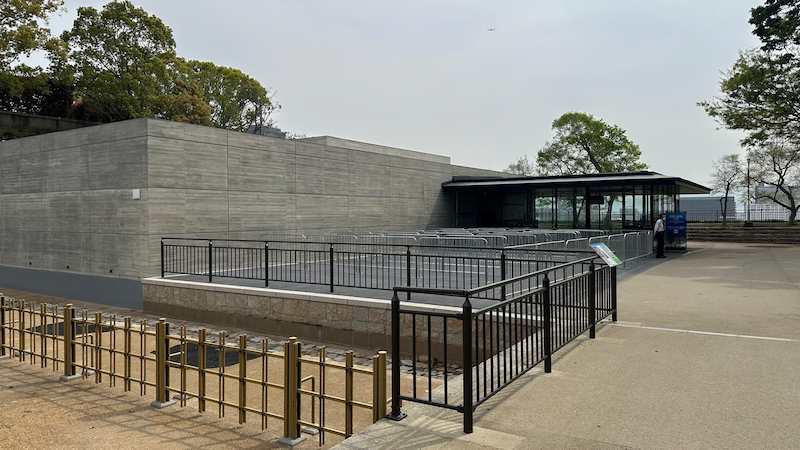
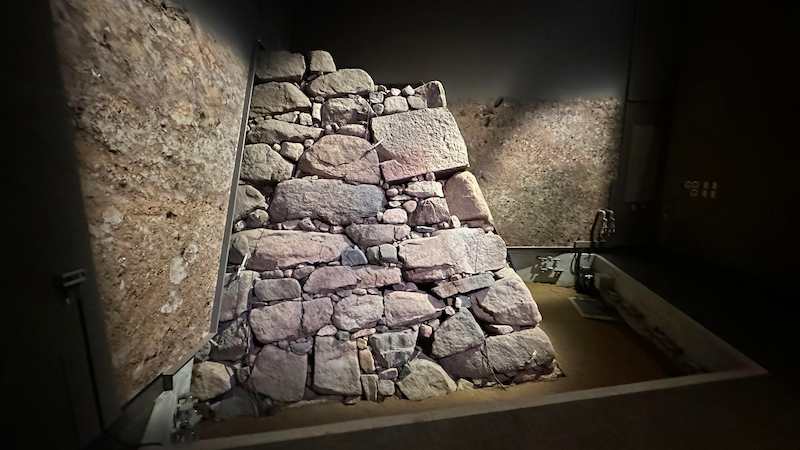
⭐Recommendation Rating
- Historical Significance: ☆☆☆
- Visual Appeal: ☆☆☆
- Experiential Value: ☆☆☆
Toyotomi Ishigaki-kan is a modern underground exhibition space where visitors can view the original stone walls of Toyotomi Hideyoshi’s 16th-century Osaka Castle, uncovered during excavations in 1984. These ancient walls had been buried under more than six meters of earth during the Tokugawa shogunate’s reconstruction of the castle following the Summer Siege of 1615.
This recently opened facility offers a rare glimpse into the Tsume-no-Maru (詰ノ丸), the most important residential area of Hideyoshi’s castle, where he lived with his wife Nene and, later, where Lady Yodo and their son Hideyori resided. Through glass flooring and multilingual displays, visitors can closely examine stonework techniques such as Nozurazumi (野面積み), scorch marks from wartime, drainage stones (裏込石), and repurposed temple foundations (転用石).
This site offers a tangible and emotional connection to the buried legacy of Toyotomi Osaka Castle—a moment in history once lost, now revealed.
🎟️ Admission & Visitor Info
- Admission: Included with Osaka Castle Main Tower ticket (¥1,200 adults)
- Hours: 9:00 AM – 6:00 PM (last entry 5:30 PM)
- Closed: December 28 – January 1
- Restrooms: Not available inside the exhibit
- Note: The exhibit may close without notice depending on stone wall conditions
🔗 Official Website (JP): https://www.osakacastle.net/toyotomi_stone_wall/
| Year Built | Recently opened; walls discovered in 1984; originally built in 1583 |
|---|---|
| Builder | Stonework: Toyotomi Hideyoshi; Facility: Osaka City |
| Structure/Features | Subterranean viewing area, stone wall from Tsume-no-Maru, Nozurazumi, reuse stones |
| Renovation/Restoration | Preserved after excavation in 1984; facility constructed above the exposed stone wall |
| Current Status | Open to the public as part of the Osaka Castle Museum admission |
| Destruction/Damage | Buried under 6 meters of earth during Tokugawa reconstruction after 1615 |
| Cultural Property Designation | Part of Osaka Castle Historic Site |
| Remarks | Exhibits authentic stonework from the core of Toyotomi Osaka Castle |
🗺 Address:
1-1 Osakajo, Chuo Ward, Osaka, 540-0002
🚶 Access:
Approx. 3-minute walk from Sakura-mon gate
⏳ Recommended Visit Duration:
- Quick viewing: ~10 minutes
- Full experience with displays: ~20–30 minutes
📍 Key Highlights
- View Real Toyotomi Stone Walls: From the castle’s most central and private area—Tsume-no-Maru
- Fire Scars from the Siege: See traces of the 1615 Summer Campaign still marked on the stones
- Primitive and Powerful Technique: Nozurazumi stone stacking, left uncut and raw
- Burial by Tokugawa: 6 meters of earth laid to hide the Toyotomi legacy
- Intimate Insight: A direct, physical link to Hideyoshi’s original Osaka Castle
📌 Trivia
- The Hidden Castle: What you see above ground is Tokugawa Osaka Castle. What you see here is Toyotomi’s—buried, yet enduring.
- Layered Legacy: The exhibit vividly contrasts the ambition of Hideyoshi with the suppression by the Tokugawa regime.
👉 Discover a personal journal from the visit
Osaka Castle Main Tower (Osaka Castle Museum)
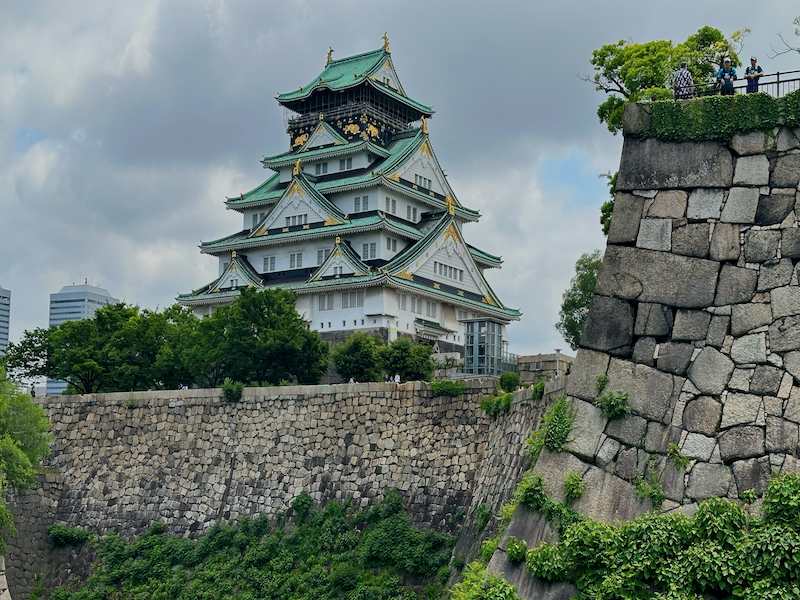
⭐ Recommendation Rating
- Historical Significance: ☆☆☆
- Visual Appeal: ☆☆☆
- Experiential Value: ☆☆☆
The Osaka Castle Main Tower is the iconic centerpiece of the castle complex and one of Japan’s most famous landmarks. Originally constructed by Toyotomi Hideyoshi in 1585, it was destroyed and rebuilt multiple times throughout history. The current structure, reconstructed in 1931 using modern concrete and restored in later decades, stands as both a symbol of the city’s resilience and a showcase of Japan’s feudal heritage.
Today, the tower functions as a museum with eight floors of exhibits covering the life of Toyotomi Hideyoshi, the history of the castle, and Osaka’s role in the unification of Japan. Inside, visitors can view historical artifacts, samurai armor, panoramic dioramas of battles, and interactive displays. The top floor offers a 360-degree observation deck with sweeping views of Osaka city, making it one of the most popular destinations for both domestic and international travelers.
🎟️ Admission & Visitor Info
- Admission: ¥1,200 adults (includes access to Toyotomi Ishigaki-kan)
- Hours: 9:00 AM – 6:00 PM (last entry 5:30 PM)
- Closed: December 28 – January 1
- Restrooms: Available inside
- Accessibility: Elevator access to all floors except the rooftop
🔗 Official Website: https://www.osakacastle.net/
| Year Built | Originally 1585 (Toyotomi); current tower rebuilt in 1931 |
|---|---|
| Builder | Toyotomi Hideyoshi (original); Osaka City (current reconstruction) |
| Structure/Features | Concrete tower with 8 museum floors, observation deck, copper roof |
| Renovation/Restoration | Major restorations in 1997 and 2022 |
| Current Status | Open as a public museum; fully functional |
| Destruction/Damage | Destroyed in 1615, 1665, and 1868; rebuilt in 1931 |
| Cultural Property Designation | Not designated (modern reconstruction) |
| Remarks | Houses the Osaka Castle Museum and offers rooftop city views |
🗺 Address:
1-1 Osakajo, Chuo Ward, Osaka, 540-0002
🚶 Access:
Approx. 3-minute walk from Toyotomi Hideyoshi’s Ishigaki-kan
⏳ Recommended Visit Duration:
- Quick tour: ~30 minutes
- Full museum + rooftop view: ~60–75 minutes
📍 Key Highlights
- Historical Artifacts: Swords, armor, portraits, and dioramas showcasing the life of Hideyoshi and samurai culture
- Panoramic Observation Deck: Enjoy a stunning 360-degree view of modern Osaka from the top floor
- Reconstruction Symbol: A modern building with deep historical roots and civic pride
- Family-Friendly Exhibits: Touchscreens, models, and educational displays suitable for all ages
- Iconic Photo Spot: A must-see silhouette against the sky, especially during cherry blossom season
📌 Trivia
- Rebuilt by Citizens: The current tower was funded by public donations in 1931 during the early Showa era
- Modeled After the Tokugawa Version: The current tower is based on the larger Tokugawa-era reconstruction, not Hideyoshi’s original. While both had five external layers and eight internal floors, the Tokugawa version featured expanded stone walls and a grander scale overall.
- Survived WWII: Despite being targeted, the current tower miraculously avoided major damage during air raids
Gokurakubashi Bridge
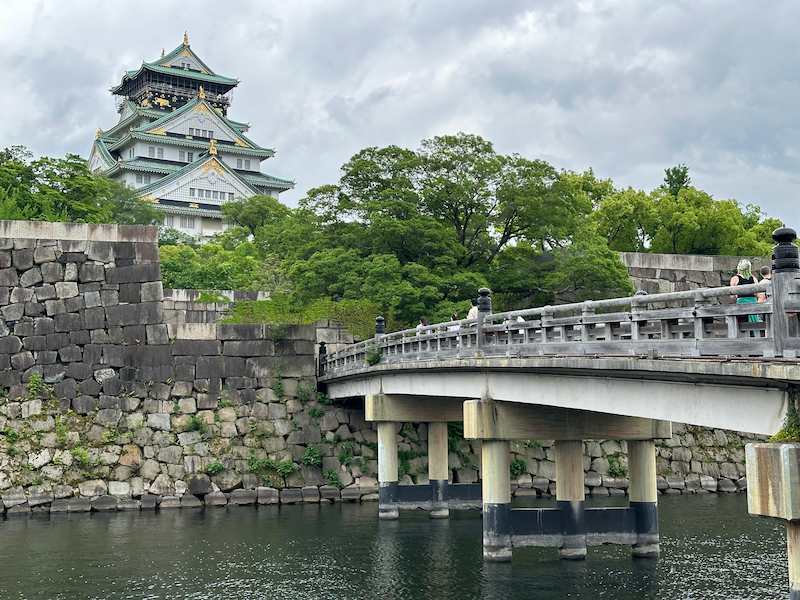
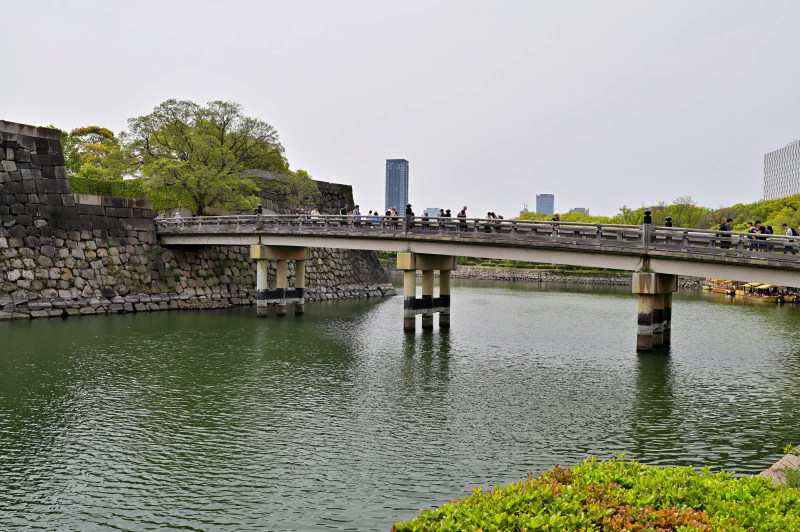
⭐ Recommendation Rating
- Historical Significance: ☆☆
- Visual Appeal: ☆☆☆
- Experiential Value: ☆☆
Gokurakubashi, or “Bridge to Paradise,” marks the northern exit of Osaka Castle’s inner bailey and offers one of the most striking views of the main tower. The graceful stone bridge crosses the inner moat, creating a picturesque frame of the castle reflected in water—especially beautiful during cherry blossom season or at sunset.
Originally constructed during the Edo period, the bridge and surrounding area served as a critical access point for the castle’s northern defenses. Although the current structure has been rebuilt in modern times, its placement and visual impact remain historically inspired.
This is the perfect spot to end your Osaka Castle walking tour. From here, follow the path toward Aoya Gate (青屋門)—a lesser-known but historically significant entryway used by high-ranking samurai and officials. Exit through this gate and head straight to Osaka Business Park Station, located just 5 minutes away.
| Year Built | Originally Edo period; modern structure restored in 1965 |
|---|---|
| Builder | Tokugawa shogunate (original); Osaka City (current bridge) |
| Structure/Features | Stone bridge over the inner moat with clear view of main tower |
| Renovation/Restoration | Rebuilt after WWII; current version retains historical layout |
| Current Status | Open to public; popular photo and exit point |
| Destruction/Damage | Destroyed in 1868 fire; replaced in modern era |
| Cultural Property Designation | None |
| Remarks | Offers one of the best panoramic views of Osaka Castle |
🗺 Address:
1-1 Osakajo, Chuo Ward, Osaka, 540-0002
🚶 Access:
Approx. 6-minute walk from Osaka Castle Main Tower
⏳ Recommended Visit Duration:
- Quick photo stop: ~5 minutes
- Relaxing stroll and final view: ~10–15 minutes
📍 Key Highlights
- Scenic Castle Reflection: Iconic view of the main tower over the water
- Final Photo Spot: Capture one last memory before heading out
- Bridge with Symbolism: Gokurakubashi means “Bridge to Paradise”—a poetic name for your exit
- Northern Perspective: Offers a unique angle of the castle less seen by casual visitors
- Gateway to Departure: Leads directly to Aoya Gate and the subway station
📌 Trivia
- Name Origin: “Gokuraku” means “paradise” in Japanese—some say crossing this bridge was considered auspicious
- Uncrowded Gem: Compared to Otemon Gate, this area is often quiet and peaceful, especially in the morning or evening
- Surprise Ending: Many visitors don’t realize that some of the most beautiful views are saved for last
🚶Access to Osaka Business Park Station
Approx. 9-minute walk from Gokurakubashi Bridge
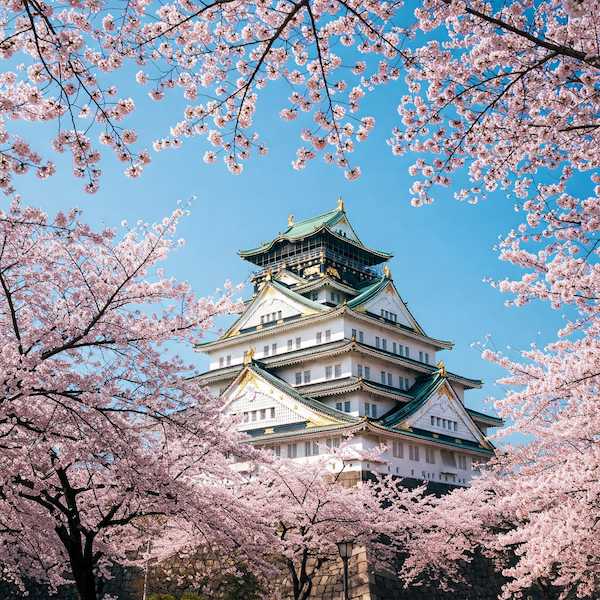

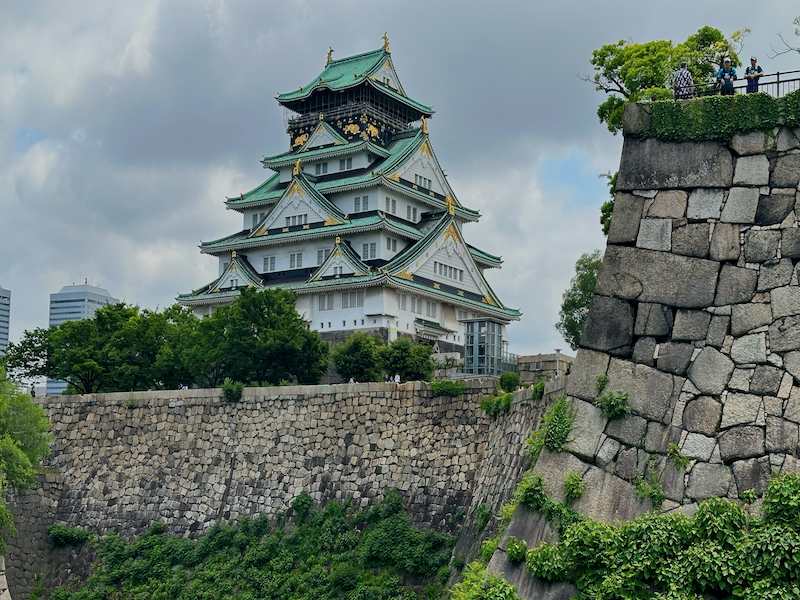

comment